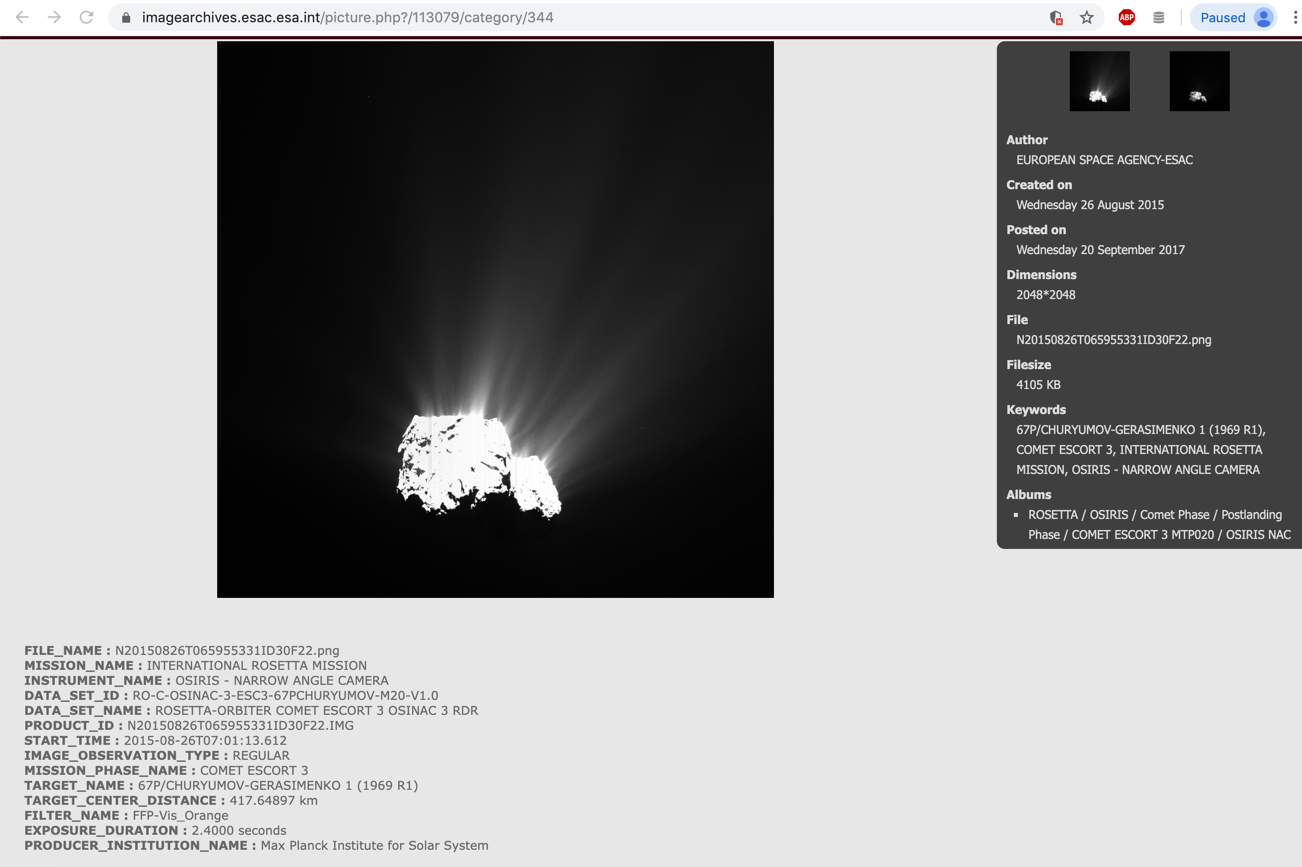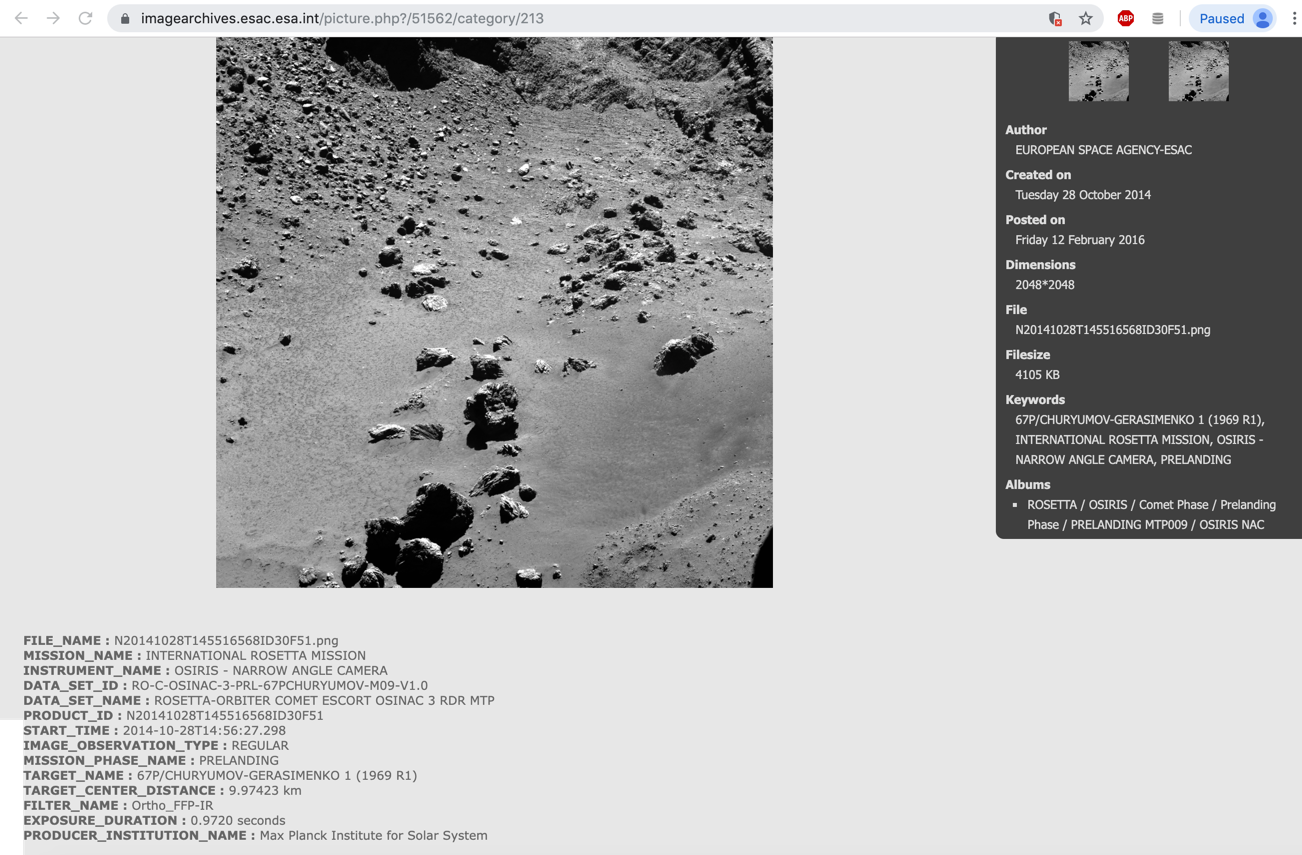Flat Earth NOT - The Rosetta Comet Landing Mission, one of the greatest achievements of mankind
The Rosetta Comet Landing Mission, one of the greatest achievements of mankind
"The European Space Agency (ESA) said on June 21, 2018, that the Rosetta spacecraft’s image archive is complete. Rosetta is the craft that blew our minds in 2014 by providing the first truly close-up views of a comet. And, behold, when seen close-up, comets really do look a bit like rubble piles, as astronomers have long suspected. But they also look like little worlds, complete with fractures, cliffs and massive rolling boulders. Now all high-resolution images and underpinning data from Rosetta’s pioneering mission at comet 67P/Churyumov-Gerasimenko are available in ESA’s archives, with the last release including the iconic images of finding lander Philae, and Rosetta’s final descent to the comet’s surface..."
(https://earthsky.org/space/rosetta-spacecraft-image-archive-complete)
Thousands of images are available here for viewing:
Archive Image Browser
Planetary Science Archive






-
Update: September 9, 2020
In August 2014, the ESA’s Rosetta spacecraft arrived at its destination, Comet 67P/Churyumov-Gerasimenko, after a 10 year journey. Rosetta carried a small companion, the Philae Lander. On November 12th, Philae was sent to the surface of Comet 67P. Unfortunately, things didn’t go exactly as planned, and the lander’s mission lasted only 63 hours.
During that time, it gathered what data it could. But mission scientists weren’t certain of its precise location, meaning its data was difficult to interpret accurately. Only when scientists knew precisely where Philae was located on the comet, could they make best use of all of its data.
Rosetta was the third mission in the ESA’s Horizon 2000 program. On its way to Comet 67P, it performed flybys of Earth and Mars, and of two other asteroids. But Comet 67P was its target, and it was the first spacecraft to ever orbit a comet. And the Philae lander was the first spacecraft to land on a comet...
(Please read this full article at the URL posted above)
-
Update: September 21, 2020
Rosetta spacecraft detects unexpected ultrviolet aurora at a comet, at phys.org
Data from Southwest Research Institute-led instruments aboard ESA's Rosetta spacecraft have helped reveal auroral emissions in the far ultraviolet around a comet for the first time.
At Earth, auroras are formed when charged particles from the Sun follow our planet's magnetic field lines to the north and south poles. There, solar particles strike atoms and molecules in Earth's atmosphere, creating shimmering curtains of colorful light in high-latitude skies. Similar phenomena have been seen at various planets and moons in our solar system and even around a distant star. SwRI's instruments, the Alice far-ultraviolet (FUV) spectrograph and the Ion and Electron Sensor (IES), aided in detecting these novel phenomena at comet 67P/Churyumov-Gerasimenko (67P/C-G).
"Charged particles from the Sun streaming towards the comet in the solar wind interact with the gas surrounding the comet's icy, dusty nucleus and create the auroras," said SwRI Vice President Dr. Jim Burch who leads IES. "The IES instrument detected the electrons that caused the aurora."
The envelope of gas around 67P/C-G, called the "coma," becomes excited by the solar particles and glows in ultraviolet light, an interaction detected by the Alice FUV instrument.
(Please read this full article at the URL posted above)
- -
Published on – February 27, 2020
Discussion at - https://www.youtube.com/channel/UC7ipUKERU0tzYFxALJBli4A/discussion
Our home page all articles - http://flatearthlunacy.com
kind regards, JonahTheScientist







